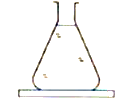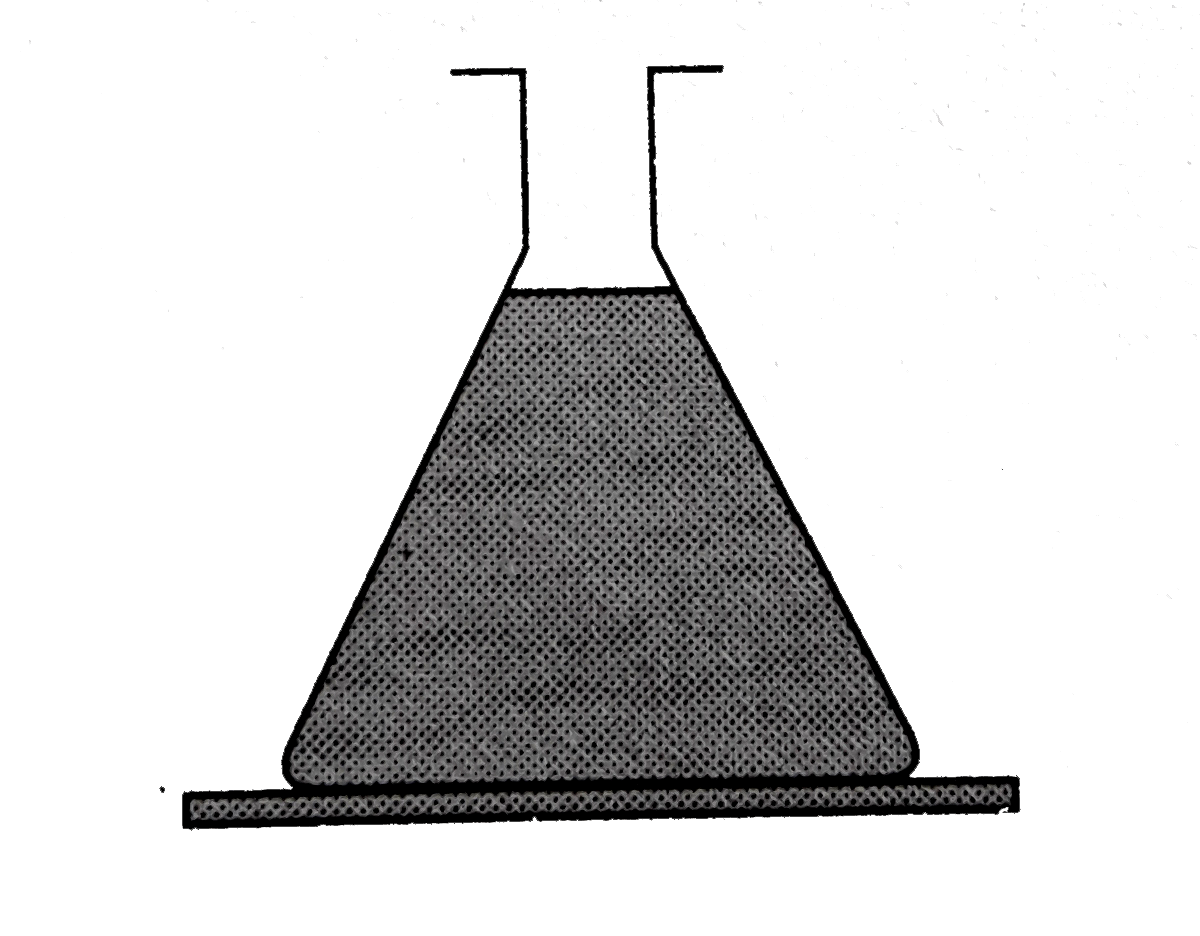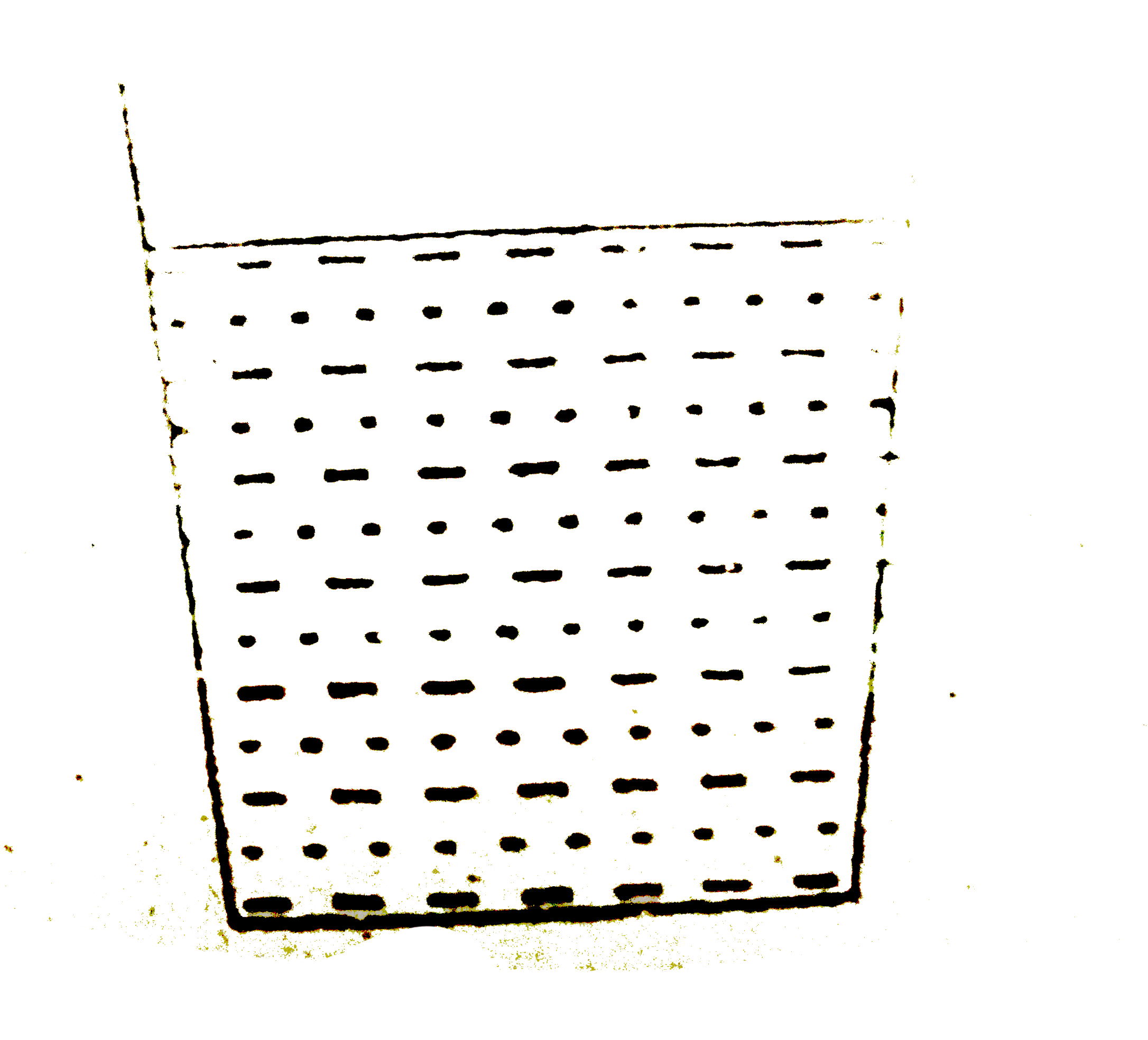A massless conical flask filled with a liquid is kept on a table in a vacuum. The force exerted by the liquid on the base of the flask is W1. The force exerted by the flask on the table is W2.
a) W1=W2
b) W1>W2
c) W1<W2
d) The force exerted by the liquid on the walls of the flask is (W1−W2)

a, and c are correct
b and d are correct
a, c and d are correct
All are correct
The correct Answer is:B
Topper's Solved these Questions
- BOOK - AAKASH SERIESCHAPTER - MECHANICAL PROPERTIES OF FLUIDS EXERCISE - EXERCISE-IB (ASSERTION & REASON)46videos
MECHANICAL PROPERTIES OF FLUIDS
- BOOK - AAKASH SERIESCHAPTER - MECHANICAL PROPERTIES OF FLUIDS EXERCISE - EXERCISE-268videos
MECHANICAL PROPERTIES OF FLUIDS
- BOOK - AAKASH SERIESCHAPTER - MECHANICAL PROPERTIES OF FLUIDS EXERCISE - EXERCISE-343videos
MECHANICAL PROPERTIES OF FLUIDS
- BOOK - AAKASH SERIESCHAPTER - LAWS OF MOTIONEXERCISE - PRACTICE EXERCISE108videos
LAWS OF MOTION
- BOOK - AAKASH SERIESCHAPTER - MECHANICAL PROPERTIES OF SOLIDSEXERCISE - EXERCISE - 326videos
MECHANICAL PROPERTIES OF SOLIDS
Similar Questions
_E01_126_Q01.png)
A massless conical flask filled with a liquid is kepth on t a table in a vacuum the force exerted by the liquid on the bse of the flask is W1. Th force exerted by the flask on the table is W2View SolutionIn forcd oscillation of a particle, the amplitude is maximum for a frequency ω1 of the force, while the energy is maximum for a frequency ω2 of the force. What is the relation between ω1 and ω2 ?
View Solution
Knowledge Check
- Question 1 - Select One
_E01_126_Q01.png)
A massless conical flask filled with a liquid is kepth on t a table in a vacuum the force exerted by the liquid on the bse of the flask is W1. Th force exerted by the flask on the table is W2AW1=W2BW1>W2CW1<W2Dthe force exerted by the liquid on the walls of the flask is (W1−W2) - Question 2 - Select One
A massless conical flask filled with a liquid is kept on a table in a vacuum. The force exerted by the liquid on the base of the flask is W1. The force exerted by the flask on the table is W2.
(i) W1=W2
(ii) W1>W2
(iii) W1<W2
(iv)The force exerted by the liquid on the walls of the flask is (W1−W2).
 .A(i),(iv)B(ii),(iv)C(iii),(iv)D(iii)
.A(i),(iv)B(ii),(iv)C(iii),(iv)D(iii) - Question 3 - Select One
A liquid of mass 1 kg is filled in a flask as shown in figure. The force exerted by the flask on the liquid is (g=10m/s2) [Neglect atmospheric pressure]:
 A10 NBgreater than 10NCless than 10NDzero
A10 NBgreater than 10NCless than 10NDzero
A metallic solid body of weight 'W1' is immersed in a liquid, whose temperature is t∘1C. The apparent wight of the body in the given liquid is 'W2'. Then the temperature of that liquid is changed to t∘2C, the apparent wight of the body is 'W3'. If the density of this liquid at t∘1C and t∘2C was d1andd2, respectively, then find the volume coefficient of the solid body in terms of W1,W2,W3,d1,d2 and t∘1Candt∘2C.
View SolutionTwo weights W1 and W2 in equilibrium and at rest, are suspended as shown in figure. Then the ratio W1W2 is :
 View Solution
View SolutionIf W1:W2=2:3 and W1:W3=1:2 then W2:W3 is
View SolutionIf W1:W2=2:3 and W1:W3=1:2, then W2:W3 is:
View SolutionWhen an object of weight W is immersed in a liquid, its weight in the liquid is found to be W1. When it is immersed in water, the weight of the displaced if found to be W2. The relative density of the liquid is
View Solution

